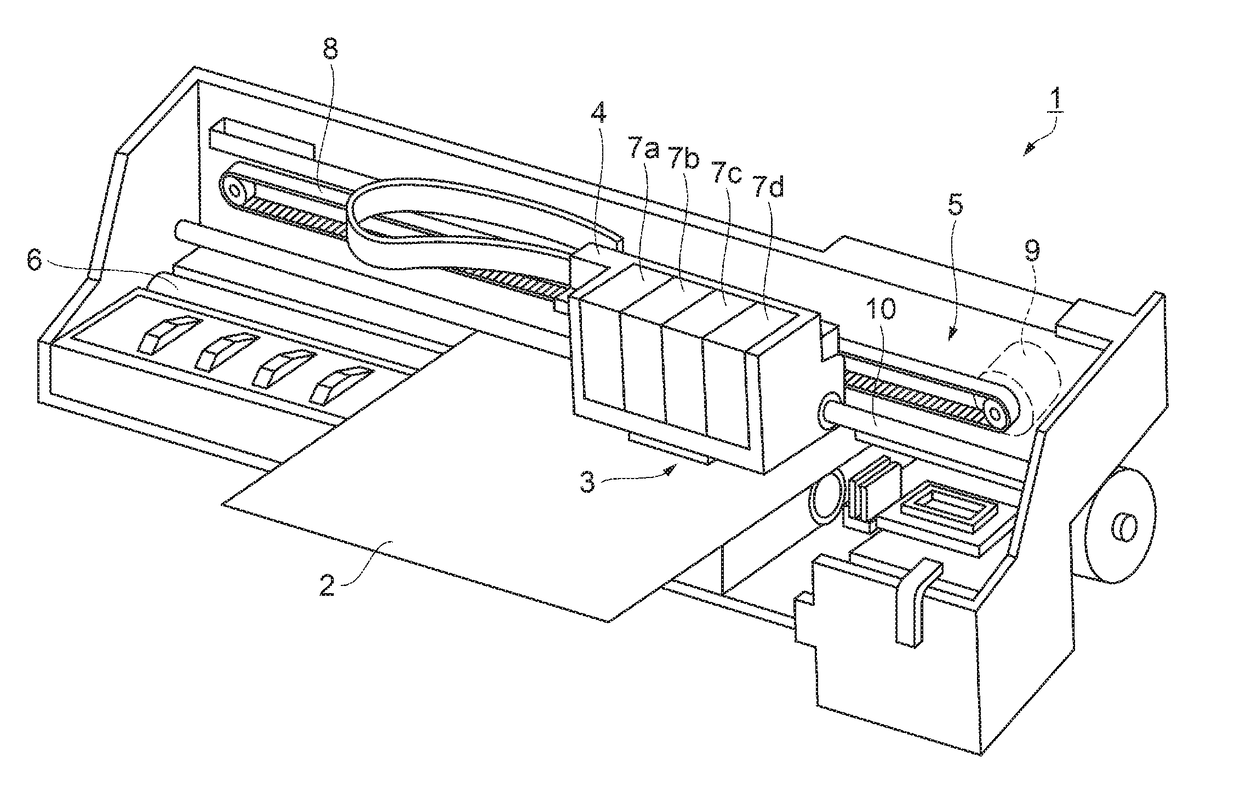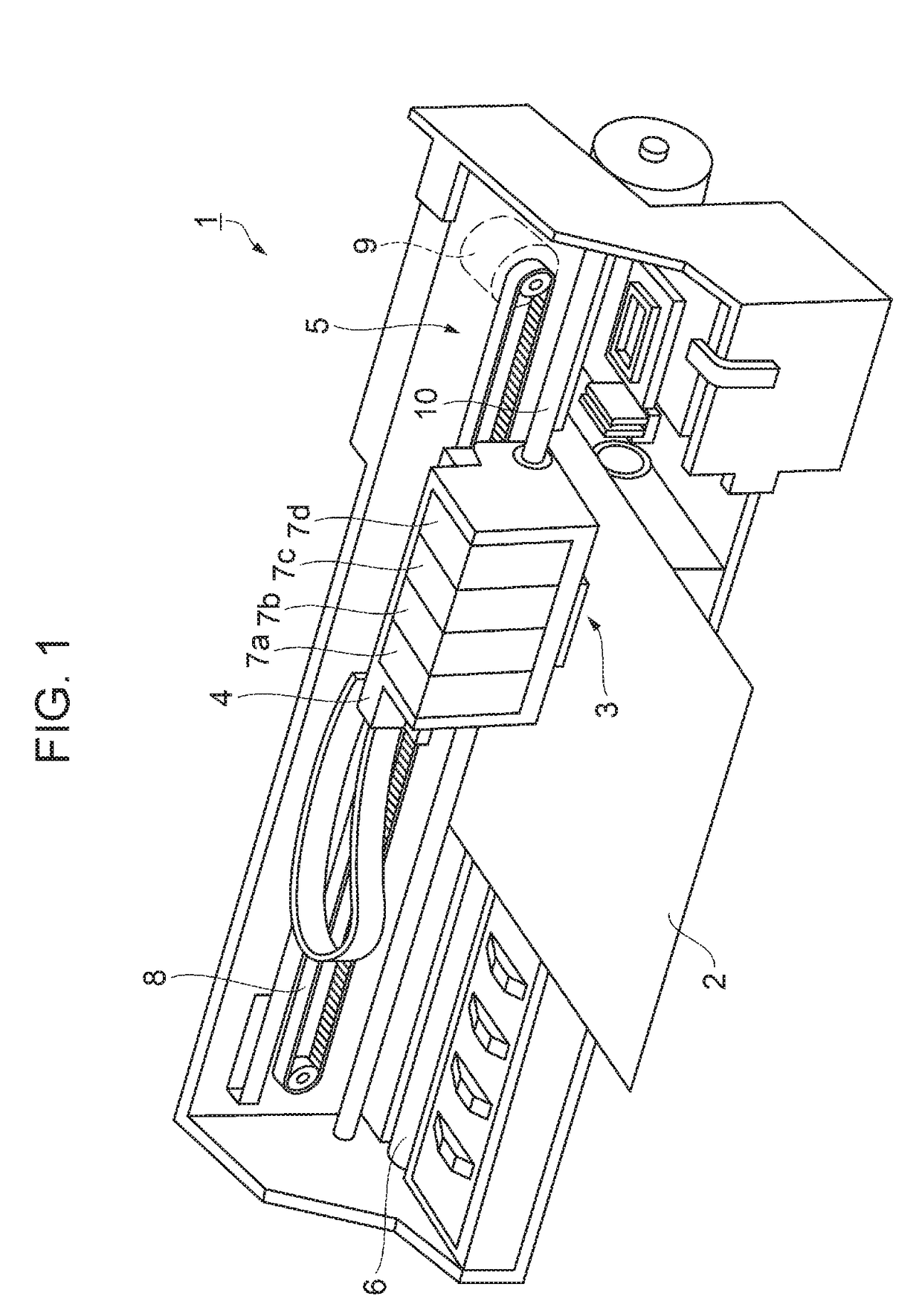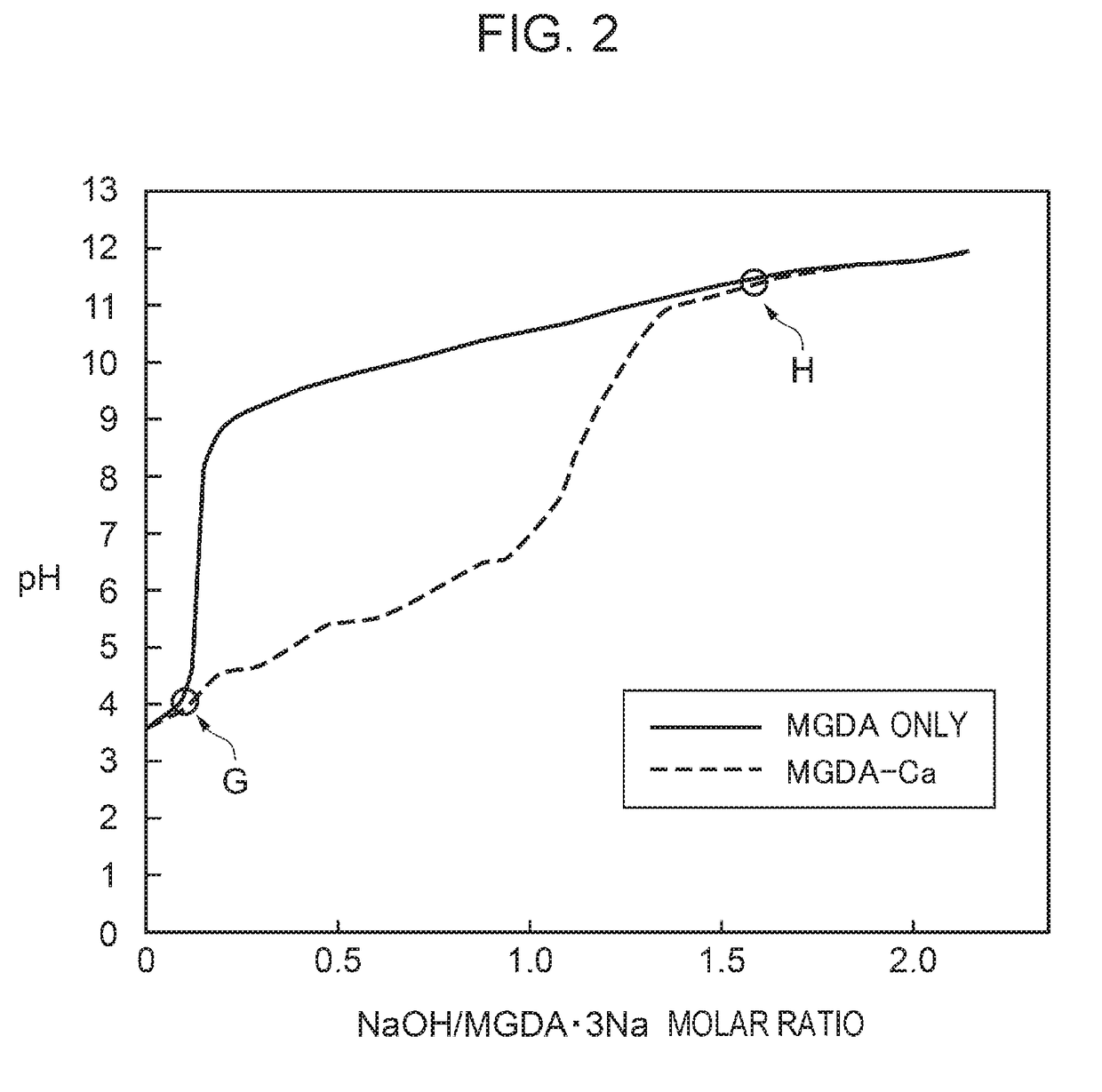Ink jet textile printing ink composition and ink receiving container
a textile printing and ink jet technology, applied in the direction of application, dyeing process, organic chemistry, etc., can solve the problems of degradation of the long-term storage property of the aqueous ink composition or the generation of clogging at the ink jet head in some cases, so as to improve the physical properties, the quality, and the like of the ink receiving container.
- Summary
- Abstract
- Description
- Claims
- Application Information
AI Technical Summary
Benefits of technology
Problems solved by technology
Method used
Image
Examples
Embodiment Construction
[0035]An ink jet textile printing ink composition (hereinafter, simply also referred to as “ink composition” in some cases) is ejected in the form of fine ink droplets (liquid droplets of the ink composition) to a recording medium, such as a cloth, through an ejection nozzle (hereinafter, simply also referred to as “nozzle” in some cases) of an ink jet head by an ink jet method and is formed into an image, a color, a letter, a pattern, and / or the like, so that the ink composition described above is used for textile printing application.
[0036]The ink jet textile printing ink composition according to this embodiment comprises water, a color material, and a metal chelating agent, the above metal chelating agent includes at least one of methyl glycine diacetic acid (MGDA), L-glutamine diacetic acid (GLDA), L-aspartic diacetic acid (ASDA), hydroxyethylimino diacetic acid (HIDA), 3-hydroxy-2,2′-iminodisuccucinic acid (HIDS), dicarboxymethyl glutamic acid (CMGA), (S,S)-ethylenediaminedisuc...
PUM
| Property | Measurement | Unit |
|---|---|---|
| Percent by mass | aaaaa | aaaaa |
| Percent by mass | aaaaa | aaaaa |
| Percent by mass | aaaaa | aaaaa |
Abstract
Description
Claims
Application Information
 Login to View More
Login to View More - R&D
- Intellectual Property
- Life Sciences
- Materials
- Tech Scout
- Unparalleled Data Quality
- Higher Quality Content
- 60% Fewer Hallucinations
Browse by: Latest US Patents, China's latest patents, Technical Efficacy Thesaurus, Application Domain, Technology Topic, Popular Technical Reports.
© 2025 PatSnap. All rights reserved.Legal|Privacy policy|Modern Slavery Act Transparency Statement|Sitemap|About US| Contact US: help@patsnap.com



